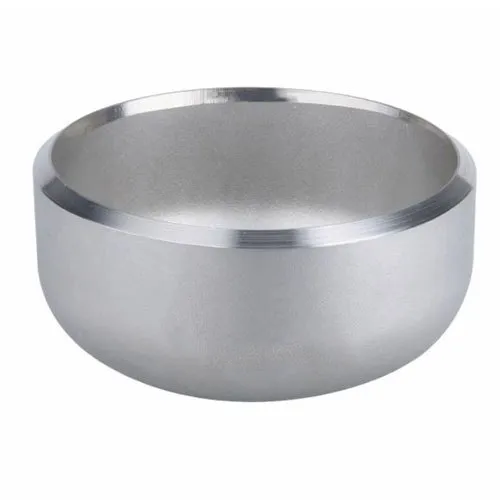-
Cangzhou Yulong Steel Co., Ltd.
-
Phone:
+86 13303177267 -
Email:
admin@ylsteelfittings.com
- English
- Arabic
- Italian
- Spanish
- Portuguese
- German
- kazakh
- Persian
- Greek
- French
- Russian
- Polish
- Thai
- Indonesian
- Vietnamese
- Zulu
- Korean
- Uzbek
- Hindi
- Serbian
- Malay
- Ukrainian
- Gujarati
- Haitian Creole
- hausa
- hawaiian
- Hebrew
- Miao
- Hungarian
- Icelandic
- igbo
- irish
- Japanese
- Javanese
- Kannada
- Khmer
- Rwandese
- Afrikaans
- Albanian
- Amharic
- Armenian
- Azerbaijani
- Basque
- Belarusian
- Bengali
- Bosnian
- Bulgarian
- Catalan
- Cebuano
- China
- China (Taiwan)
- Corsican
- Croatian
- Czech
- Danish
- Esperanto
- Estonian
- Finnish
- Frisian
- Galician
- Georgian
- Kurdish
- Kyrgyz
- Lao
- Latin
- Latvian
- Lithuanian
- Luxembourgish
- Macedonian
- Malgashi
- Malayalam
- Maltese
- Maori
- Marathi
- Mongolian
- Myanmar
- Nepali
- Norwegian
- Norwegian
- Occitan
- Pashto
- Dutch
- Punjabi
- Romanian
- Samoan
- Scottish Gaelic
- Sesotho
- Shona
- Sindhi
- Sinhala
- Slovak
- Slovenian
- Somali
- Sundanese
- Swahili
- Swedish
- Tagalog
- Tajik
- Tamil
- Tatar
- Telugu
- Turkish
- Turkmen
- Urdu
- Uighur
- Welsh
- Bantu
- Yiddish
- Yoruba

Nov . 10, 2024 02:25 Back to list
EN 1092 1 Flange Specifications Overview and Key Features for Various Applications
Understanding EN 1092-1 Flange Specifications
Flanges are critical components in piping systems, providing a means to connect pipes, valves, and other equipment. Among various flange standards, EN 1092-1 is widely recognized, especially in Europe. This standard specifies the technical requirements for flanges made from various materials, primarily focusing on dimensions, materials, mechanical properties, and testing methods.
Overview of EN 1092-1
The EN 1092-1 standard, titled Flanges and their joints - Circular flanges for pipes, valves, and fittings - Part 1 Flanges, outlines the specifications for circular flanges intended for use in piping systems. The standard is applicable to various industries, including water, gas, and oil, ensuring safety and interoperability of components across different applications.
Flanges covered under this standard accommodate various pressure classes and sizes, allowing them to meet the diverse requirements of modern industrial applications. The standard specifies several types of flanges, including slip-on, weld neck, blind, and others, each serving unique applications based on design and operational requirements.
Types of Flanges
EN 1092-1 includes various types of flanges, such as
1. Weld Neck Flanges These flanges are designed to be welded to the pipe. Their tapered neck provides strength and reduces stress concentrations, making them ideal for high-pressure applications.
2. Slip-On Flanges These flanges slip over the pipe and are then welded in place. They are easier to align and are often used in low-pressure situations.
3. Blind Flanges Blind flanges are solid disks used to close the end of a piping system. They do not have a hole in the center and are critical for creating pressure boundaries.
4. Socket Weld Flanges These are used with small diameter pipes and involve inserting the pipe into a recessed area of the flange and then welding.
en 1092 1 flange specifications

Material and Pressure Classifications
EN 1092-1 specifies various materials that can be used to manufacture flanges, including carbon steel, stainless steel, and alloy steel. Each material has specific properties and suitability for different environments and operating conditions.
The standard categorizes flanges into multiple pressure classes, including PN 2.5, PN 6, PN 10, PN 16, PN 25, and others, where 'PN' denotes the nominal pressure for the flange design in bar. This classification helps in selecting the right flange for a particular application, ensuring that it can withstand the operational pressure without failure.
Dimensions and Tolerances
One of the essential aspects of the EN 1092-1 standard is the detailed specification of flange dimensions and tolerances. The standard provides precise measurements for flange diameter, bolt hole circle diameter, thickness, and other key dimensions to ensure compatibility with pipes and fittings.
Accurate dimensions are crucial, as they ensure proper sealing and connection between flanged joints. Inadequate dimensions can lead to leakage, pressure drops, and eventual failure of the system, emphasizing the importance of adhering to the standard.
Testing and Compliance
To ensure the reliability of flanges produced under the EN 1092-1 standard, a series of tests must be conducted. These include visual inspections, dimensional checks, and mechanical property evaluations, such as tensile strength and yield strength testing.
Compliance with EN 1092-1 not only guarantees that flanges meet necessary specifications but also enhances safety in construction and industrial applications. Manufacturers often seek certification to this standard to demonstrate their commitment to quality and safety.
Conclusion
In conclusion, EN 1092-1 flange specifications provide a comprehensive framework for manufacturers and users alike. By addressing various types, materials, pressure classifications, and dimensional tolerances, the standard plays a crucial role in promoting safety, reliability, and interoperability in piping systems across industries. Understanding and adhering to these specifications is vital for anyone involved in the design, manufacture, and maintenance of piping systems, as it contributes to the overall integrity and efficiency of industrial operations. Whether for transporting fluids, gases, or steam, selecting the right flanges according to EN 1092-1 can significantly impact the performance of the entire system.
Latest news
-
ANSI 150P SS304 SO FLANGE
NewsFeb.14,2025
-
ASTM A333GR6 STEEL PIPE
NewsJan.20,2025
-
ANSI B16.5 WELDING NECK FLANGE
NewsJan.15,2026
-
ANSI B16.5 SLIP-ON FLANGE
NewsApr.19,2024
-
SABS 1123 FLANGE
NewsJan.15,2025
-
DIN86044 PLATE FLANGE
NewsApr.19,2024
-
DIN2527 BLIND FLANGE
NewsApr.12,2024
-
JIS B2311 Butt-Welding Fittings LR/SR 45°/90° /180°Seamless/Weld
NewsApr.23,2024











